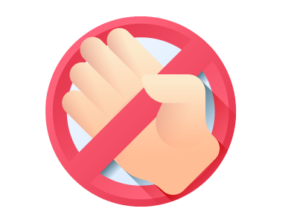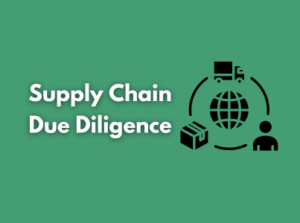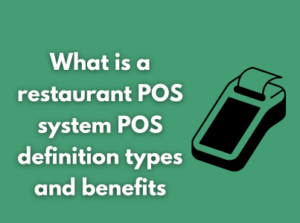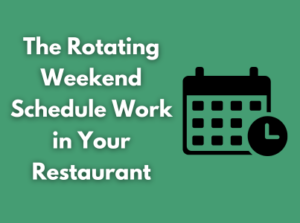Running a restaurant can sometimes feel like a high-stakes juggling act. Between crafting the perfect menu, managing your team, and keeping customers returning, it’s easy for health codes to fall to the back burner. But here’s the deal: avoiding common health code violations isn’t just about acing inspections—it’s about safeguarding your customers’ well-being and protecting your business reputation.
Cross-Contamination: The Invisible Threat in Your Kitchen
Let’s face it: your kitchen may look spotless, but cross-contamination doesn’t play by the rules of appearances. It’s sneaky, invisible, and one of the top reasons health inspectors flag restaurants. The good news? This is absolutely preventable if you know what to watch out for and take clear steps to safeguard your operation.
What Exactly Is Cross-Contamination?
To put it simply, cross-contamination occurs when harmful bacteria or allergens transfer from one surface, food, or utensil to another. This invisible transfer can happen surprisingly fast and often goes unnoticed until it causes foodborne illnesses or allergic reactions. The scariest part? It’s often human behavior or minor oversights that allow these dangers to spread.

The Invisible Pathways of Cross-Contamination
Cross-contamination spreads through several routes. Knowing these pathways is the first step toward prevention:
- Dirty Cutting Boards: Using one board for raw meat and then for fresh veggies without cleaning it in-between is a classic error.
- Unwashed Hands: Handling raw chicken and then immediately touching cookware, plates, or other foods spreads bacteria like wildfire.
- Shared Utensils: Reusing knives, tongs, or spatulas without washing them properly can easily transfer bacteria.
- Improper Food Storage: Say goodbye to stacking raw and cooked foods together! Fluids from raw items like meat or fish can drip and contaminate ready-to-eat foods.
Avoiding Cross-Contamination Like a Pro
Yes, cross-contamination is sneaky, but it’s not unstoppable. A few conscientious practices can keep it at bay. Here’s how to turn your kitchen into a safe zone:
- Dedicate Cutting Boards: Keep separate cutting boards for different food groups—meats, veggies, bread, etc. Better yet, use color-coded ones. Pro tip: a red board for raw meat is a chef’s best friend!
- Wash Hands Religiously: The sink isn’t just decorative. Staff should wash their hands with warm water and soap after handling raw food, using the restroom, sneezing, or touching anything that can spread bacteria.
- Sanitize Utensils Between Uses: From knives to mixing bowls, give all tools a good scrub with hot water and soap before switching foods. Dishwashers and sanitizing chemicals are lifesavers here.
- Organize Your Storage Smartly: Always store raw items like meat and eggs on lower shelves to prevent drippings from contaminating other foods. Seal everything tightly in proper containers.
The Role of Temperature Control
Another silent player in cross-contamination: temperature abuse. Bacteria thrive in temperatures between 40°F and 140°F (commonly known as the “danger zone”). Keep cold foods cold (below 40°F) and hot foods hot (above 140°F). And always use a food thermometer to make sure you hit those safe cooking temps.
It Takes a Team Effort
Don’t underestimate the power of teamwork when it comes to stopping cross-contamination. Consistent staff training on proper food safety practices is your ace in the hole. Help employees understand why these measures matter and how their actions directly impact your operation’s safety record—and, ultimately, your diner’s health.
Food Handling: The Right and Wrong Practices You Need to Know
When it comes to running a restaurant, food handling isn’t just about following rules—it’s about protecting your customers and your reputation. Mishandling food can lead to health code violations, bad reviews, or worse, foodborne illnesses. But don’t worry; mastering the do’s and don’ts of food handling is easier than you might think. Let’s dig in!
Why Proper Food Handling Matters
From ensuring your chicken is fully cooked to keeping raw and ready-to-eat foods separate, food handling practices can make or break your kitchen’s success. Poor handling can lead to contamination, sick customers, and hefty fines during inspections. It’s your responsibility to create a safe kitchen environment where your team knows how to handle every ingredient with care. No guesswork—just food safety done right.
What Are the Right Food Handling Practices?
Let’s start with the basics. These simple yet effective tips should be non-negotiable in your kitchen:
- Wash Hands, Wash Hands, Wash Hands: This cannot be overstated. Staff should wash their hands for at least 20 seconds with soap and water before handling food, after touching raw ingredients, and after any potentially contaminating activity (like using the restroom or handling trash).
- Keep Ingredients at the Right Temperature: Cold foods must stay at 40°F or lower, while hot foods should be kept at 140°F or higher. Use calibrated thermometers to check temperatures daily and during prep or service.
- Avoid Bare-Hand Contact with Ready-to-Eat Foods: Gloves, tongs, spatulas, or deli paper should be used when serving food like salads, bread, or garnishes.
- Label and Date Everything: Proper labeling—a simple step—allows you to rotate stock regularly and ensure everything is used before it spoils. It also helps inspectors see your commitment to safety.
- Clean Cutting Boards Thoroughly: Invest in color-coded cutting boards to reduce the risk of cross-contamination. Red for raw meat, green for produce, and so on. After each use, wash with hot, soapy water and sanitize properly.
What Can Go Wrong? Food Handling Mistakes to Avoid
Unfortunately, simple errors in food handling are some of the most common violations inspectors see. Avoid these all-too-common pitfalls:
- Storing Raw Meats Above Prepared Foods: This rookie mistake can lead to dangerous drippings contaminating ready-to-eat dishes. Always store raw proteins on the bottom shelves.
- Skipping Temperature Checks: “Guessing” whether food is hot or cold enough is never acceptable. Equip your team with thermometers and make temperature checks part of your routine.
- Using the Same Utensil for Raw and Cooked Foods: A cutting board or knife used on raw chicken cannot touch cooked chicken. Always change utensils to prevent contamination.
- Neglecting to Change Gloves: Gloves only protect food if used correctly. Staff should change gloves whenever switching tasks or after handling raw ingredients. Gloves that stick with one task too long become a health threat, not a solution.
How to Build a Food-Safe Kitchen Culture
The key to success? Create a culture where food safety is second nature—from the newest staff member to your most seasoned cook. Try these tips:
- Regular Training: Make food safety training a recurring event, not a one-and-done lecture. Quick refreshers keep everyone sharp and aware of best practices.
- Lead by Example: Management must model the correct practices at all times. Your team will follow your lead—so sanitize those cutting boards and wash those hands!
- Daily Checklists: Use opening and closing checklists to cover food safety priorities during every shift. Consistency keeps surprises (and fines) at bay.
Cleaning Protocols: The Overlooked Details That Make All the Difference
Cleaning your restaurant isn’t just about making the place sparkle for guests—it’s the backbone of food safety and compliance. Yet, it’s surprising how many eateries overlook the little details that can lead to health code violations. Let’s dive into those often-missed cleaning protocols that keep inspectors happy and, more importantly, protect your customers.
Why Cleaning Isn’t Just “Cleaning”
We get it: cleaning might not be the most glamorous part of running a restaurant, but it’s essential for preventing bacteria, pests, and general kitchen chaos. Importantly, thorough cleaning helps you stay ahead of harmful pathogens like Salmonella, E. coli, and Listeria. Beyond that, it’s about consistency—because when shortcuts are taken, problems inevitably arise.
1. The Hard-to-Reach Spots You Can’t Afford to Ignore
Yes, you’re probably mopping the floors and cleaning countertops daily. But what about the sneaky areas where dirt and grime love to hide? Here are some hotspots that often get overlooked:
- Under equipment: Refrigerators, ovens, and deep fryers often hide grease and food buildup. Plan a deep-cleaning schedule to tackle these areas at least once a week.
- Ventilation hoods: Grease accumulates here and can lead to both health risks and fire hazards. Regularly degrease and clean with the proper tools to comply with safety standards.
- Door handles and light switches: These high-touch points can harbor germs but are rarely on the cleaning checklist. A quick wipe-down with disinfectant can help tremendously.
- Drains: Odors and bacteria love neglected drains. Cleaning them monthly with food-safe solutions goes a long way in preventing blockages and bacteria growth.
2. Choosing the Right Cleaning Products
Not all cleaning products are created equal, and using the wrong ones can not only fail to disinfect properly but may also introduce allergens into your kitchen. Look for food-grade cleaning agents—these are specifically designed to clean surfaces that come into contact with food.
Additionally, avoid mixing chemicals (like bleach and ammonia) as this can create dangerous fumes. Train your staff to understand when and how to use sanitizers, degreasers, and disinfectants, and ensure Material Safety Data Sheets (MSDS) for all chemicals are easily accessible.
3. Set Up Easy-To-Follow Cleaning Checklists
We all know that during busy shifts, cleaning tasks can get deprioritized—but not if you have a system. Here’s how you can ensure everyone stays on top of things:
- Create a detailed task list for daily, weekly, and monthly cleaning jobs.
- Label or color-code cleaning tools for specific areas (e.g., keeping the mop for the dining area separate from the one for the restrooms).
- Incorporate timers or scheduled reminders for deep cleaning tasks. Little nudges can help avoid overlooked duties.
- Assign specific responsibilities to staff members at the beginning of each shift, so accountability is clear.
These lists make tasks less overwhelming and ensure nothing important falls through the cracks.
4. Pay Attention to Cleaning Frequency
Consistency is key. While every surface may not need to be scrubbed daily, key areas like prep spaces and cutting boards should be sanitized multiple times throughout the day. Here’s a quick guideline:
- After each use: Clean knives, cutting boards, prep surfaces, and any utensils used for raw meat or produce.
- Every shift: Sweep and mop floors, sanitize countertops, and clean high-touch areas.
- Weekly deep-clean: Scrub floor mats, degrease cooking equipment, and address under-counter and hidden spaces.
5. Involve Your Staff in the Process
Your team is your front line. Provide them with hands-on training about cleaning protocols and why they’re crucial. When your staff knows that neglected cleaning can lead to violations—or worse, foodborne illnesses—they’ll be more likely to take these tasks seriously.
Make cleaning part of the culture in your restaurant. Celebrate staff members who go the extra mile to keep things tidy and consider investing in incentives or formal recognition for their efforts.
Staff Training: Equip Your Team to Handle Inspections Smoothly
In any restaurant, it’s your team of employees who are on the front lines of food safety and hygiene. While dazzling recipes and top-notch service are key to a restaurant’s success, a lack of proper training in health and safety can lead to costly violations during inspections. Let’s dig into why staff training matters and how you can use it to ensure smooth inspections every time.
Why is Staff Training Essential?
Even the most sophisticated health procedures won’t work if your team doesn’t know how to implement them. Inspectors are not just judging your equipment or storage practices—they’re observing your staff in action. From improper handwashing techniques to incorrect food storage handling, a single misstep could put your restaurant in violation. That’s why having a well-trained team is crucial. They’re the ones who will keep your restaurant compliant when it counts the most.
Building a Team Ready for Inspections
The goal isn’t just to avoid violations; it’s to create a culture of awareness and accountability. Here’s how you can empower your staff to feel confident about health inspections:
- Start with a Comprehensive Onboarding: From day one, new hires should have a clear understanding of your restaurant’s health and safety policies. Use a mix of manuals, in-person demonstrations, and digital tools to cover the basics of food safety, hygiene, and sanitation.
- Offer Hands-On Training: Theory is important, but practice is where real learning happens. Conduct regular workshops or shadowing sessions to teach staff about proper cleaning, cooking temperatures, avoiding cross-contamination, and safe food handling techniques.
- Make Inspections a Team Event: Instead of leaving preparations to management, involve the entire staff in pre-inspection checklists. Show them how to double-check cleaning supplies, label expiration dates properly, and verify that all processes meet code regulations.
Open Lines of Communication
Your team needs to feel comfortable voicing their doubts, so encourage open communication. Set up a system where staff can ask questions or report any confusion they might have regarding food safety practices. Remember, an informed and confident employee is an asset during surprise inspections.
Using Technology for Consistency
Invest in tools that can make your team’s job easier! Apps to help monitor fridge temperatures, reminders for deep-cleaning schedules, or inventory management software can reduce human error. Technology isn’t a replacement for training, but it’s an excellent way to reinforce good habits.
Regular Refresher Courses
Even seasoned staff benefit from occasional reminders of health code updates and best practices. Quarterly or biannual check-ins help integrate changes in local regulations and ensure that the knowledge stays fresh. Challenge them with quizzes or certification programs to make learning engaging!
Avoiding the Panic Mode
One of the best outcomes of proper training is that inspections don’t have to feel like a high-stakes game. Train your team to treat inspections as opportunities to shine, instead of something to fear. A prepared staff ensures your restaurant remains compliant and upholds its commitment to customer safety.
Storage Mistakes: The Silent Culprits That Compromise Safety
Storage may seem like a no-brainer—stack the boxes, pop the food on the shelves, and call it a day, right? Well, not exactly. In the world of restaurant health codes, improper storage is often a sneaky troublemaker that can land you in hot water during inspections or, worse, put your customers at risk. Let’s dive into some of the biggest storage mistakes and, more importantly, easy ways to fix them. Don’t worry; we’ve got your back!
1. Stacking Raw and Ready-to-Eat Foods Haphazardly
How you arrange items in your storage units isn’t just about maximizing space—it’s about keeping foods safe and uncontaminated. Placing raw meats above ready-to-eat foods is a huge no-no. Why? Because raw food juices can drip and spread harmful bacteria, ruining otherwise clean ingredients.
How to avoid this: Always store raw meats, seafood, and poultry on the lowest shelves. Keep ready-to-eat items and cooked foods higher up. If possible, assign designated shelves so there’s no confusion.
2. Neglecting Proper Temperature Control
Cold storage is one of the most critical areas where things can go sideways. Freezers and refrigerators must maintain specific temperature ranges to keep bacteria at bay. Letting your fridge creep above 41°F is a recipe for disaster (and not the good kind).
How to avoid this:
- Use properly calibrated thermometers inside all refrigeration units.
- Regularly monitor and record temperatures to spot fluctuations early.
- Keep doors closed and minimize how often you access cold storage to help maintain steady internal temps.
3. Ignoring FIFO (First In, First Out)
Letting older inventory linger at the back of your shelves can lead to spoiled goods and unhappy health inspectors. “Out of sight, out of mind” doesn’t fly in food safety!
How to avoid this: Organize your storage using the FIFO principle. That means arranging newer stock behind older stock so the oldest items are used first. Label everything clearly with dates so staff knows what to grab. Not only does this reduce waste, but it also ensures food is served at its freshest.
4. Overcrowding Your Storage Spaces
Overstuffed shelves or jam-packed refrigeration units may seem efficient, but they can compromise air circulation, making it harder to maintain safe temperatures. Plus, overcrowding means higher chances of accidental spills and cross-contamination.
How to avoid this: Avoid storing more food than your facility can comfortably handle. Maintain a storage inventory routine and consider reorganizing or expanding storage space if things feel too cramped.
5. Improper Use of Food Containers
Not all containers are created equal. Using non-food-grade containers or neglecting to cover items properly can invite contamination. Plus, if something leaks inside a container, it could spill over and affect other nearby foods.
How to avoid this:
- Invest in food-grade, sealable containers designed for safe storage.
- Label each container with its contents and “use by” date.
- Keep lids sealed tight and store items on clean, sanitized shelving.
The Red Flags Inspectors Notice First and How to Address Them
Picture this: an inspector enters your restaurant, clipboard in hand, ready to evaluate your establishment. First impressions mean everything—not just for diners, but also for health inspectors. So, what red flags grab their attention right off the bat? Let’s uncover these warning signs and, more importantly, how you can eliminate them before they become an issue.

1. A Messy Entrance or Front-of-House Area
The front-of-house area sets the tone for the health inspector’s visit. If the lobby or dining area is dirty, cluttered, or disorganized, that’s their first clue that things might not be much better behind the scenes. How can you address this?
- Keep it spotless: Floors should be swept and mopped regularly, and surfaces should be wiped down consistently.
- Maintain impeccable restrooms: These are part of the dining experience and reflect how you manage cleanliness restaurant-wide. Keep soap dispensers filled, fix leaky fixtures, and remove trash frequently.
- Remove clutter: An organized space not only looks professional but also ensures safety and compliance.
The front-of-house is often the “face” of your restaurant—make sure it shines!
2. Improper Food Displays
Inspectors are eagle-eyed when it comes to food displays in buffets, salad bars, or counter services. Items positioned at incorrect temperatures or exposed without proper covering could spell trouble. Here’s how you can ace your presentation:
- Temperature control: Make sure foods requiring refrigeration are kept below 41°F, while hot items remain at 135°F or above.
- Proper coverings: Use sneeze guards, lids, or other protective barriers to shield open food items from potential contaminants.
- Labeling: Clearly label allergen-friendly or specialty items to avoid confusion, earning you extra points for customer safety.
Your food may look delicious, but safety should always take the main stage.
3. Noticeable Pest Control Issues
If there’s one thing that will send an inspector running for the exit—it’s serious signs of pests. Whether it’s rodent droppings or fruit flies buzzing about, even faint evidence of an infestation can result in serious consequences. To stay on top of this:
- Seal entry points: Inspect windows, doors, and other openings for cracks or gaps. Bugs and pests are sneaky!
- Clean the drains: Food debris in sink or floor drains attracts pests—schedule regular cleanings to prevent buildup.
- Hire professionals: Establish a pest management program to perform routine inspections and treatments as needed.
Pest control is a non-negotiable part of food safety—don’t let it fall low on your priority list.
4. Non-Compliant Employee Practices
Frontline staff are a restaurant’s heart, but their mistakes can make an inspection less than stellar. From improper uniforms to lack of hygiene practices, health inspectors are keen to observe employees in action. Address this by:
- Enforcing proper uniforms: Require uniforms to be clean and include gloves, hair nets, or hats as necessary.
- Building hygiene habits: Regular, visible handwashing is an indicator of a well-run facility. Place signage to guide this practice.
- Footwear checks: Make sure staff wear slip-resistant, closed-toe shoes—this promotes safety and professionalism.
Small details in employee behavior often signal larger operational standards to inspectors.






